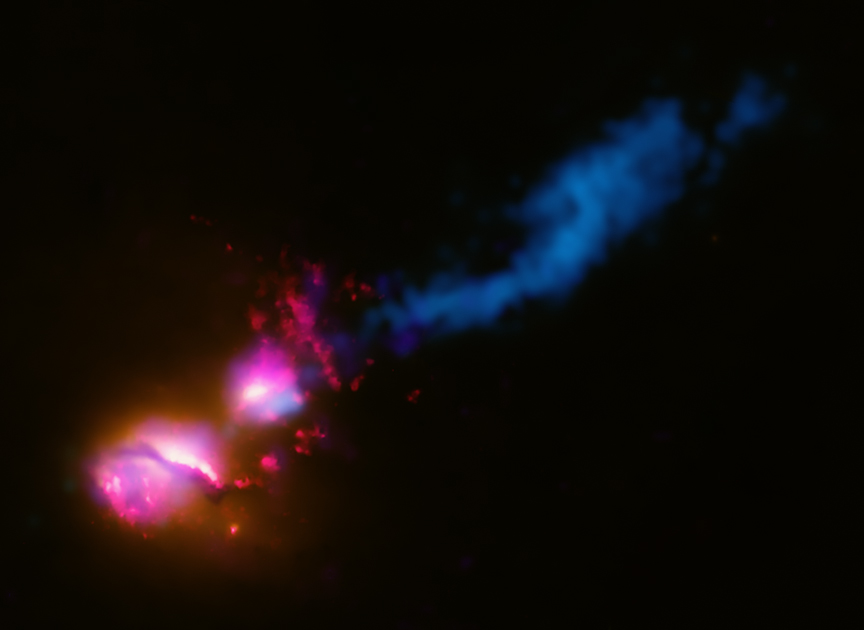
 Credit: NASA/CXC/CfA/D.Evans et al.; Optical/UV: NASA/STScI; Radio: NSF/VLA/CfA/D.Evans et al., STFC/JBO/MERLIN
Credit: NASA/CXC/CfA/D.Evans et al.; Optical/UV: NASA/STScI; Radio: NSF/VLA/CfA/D.Evans et al., STFC/JBO/MERLIN
Intergalactic Battle
Active galactic nuclei are like giant particle beam weapons. Their central black holes swallow matter at a prodigious rate, and generate by some means still not entirely understood narrow beams of high energy particles and radiation that can extend outward for millions of light years. But what happens when something gets in the path of this beam? A particularly dangerous example, and unique (so far), is the active galaxy 3C321, shown above in a composite of X-ray (purple, from Chandra), optical and UV (red and orange, from the Hubble Space Telescope) and radio (blue, from MERLIN) images. The central jet from 3C321 hits the edge of a neighboring galaxy and is deflected by it. Astronomers are not sure how the neighbor is affected; but the beam is probably powerful enough to do significant damage to nebulae, stars, and planets (if any) in the way of the death ray.
<
HEA Dictionary ● Archive
● Search HEAPOW
● Other Languages
● HEAPOW on Facebook
● Download all Images
● Education ● HEAD
>
Each week the HEASARC
brings you new, exciting and beautiful images from X-ray and Gamma ray
astronomy. Check back each week and be sure to check out the HEAPOW archive!
Page Author: Dr. Michael F. Corcoran
Last modified Monday, 26-Feb-2024 17:09:35 EST


